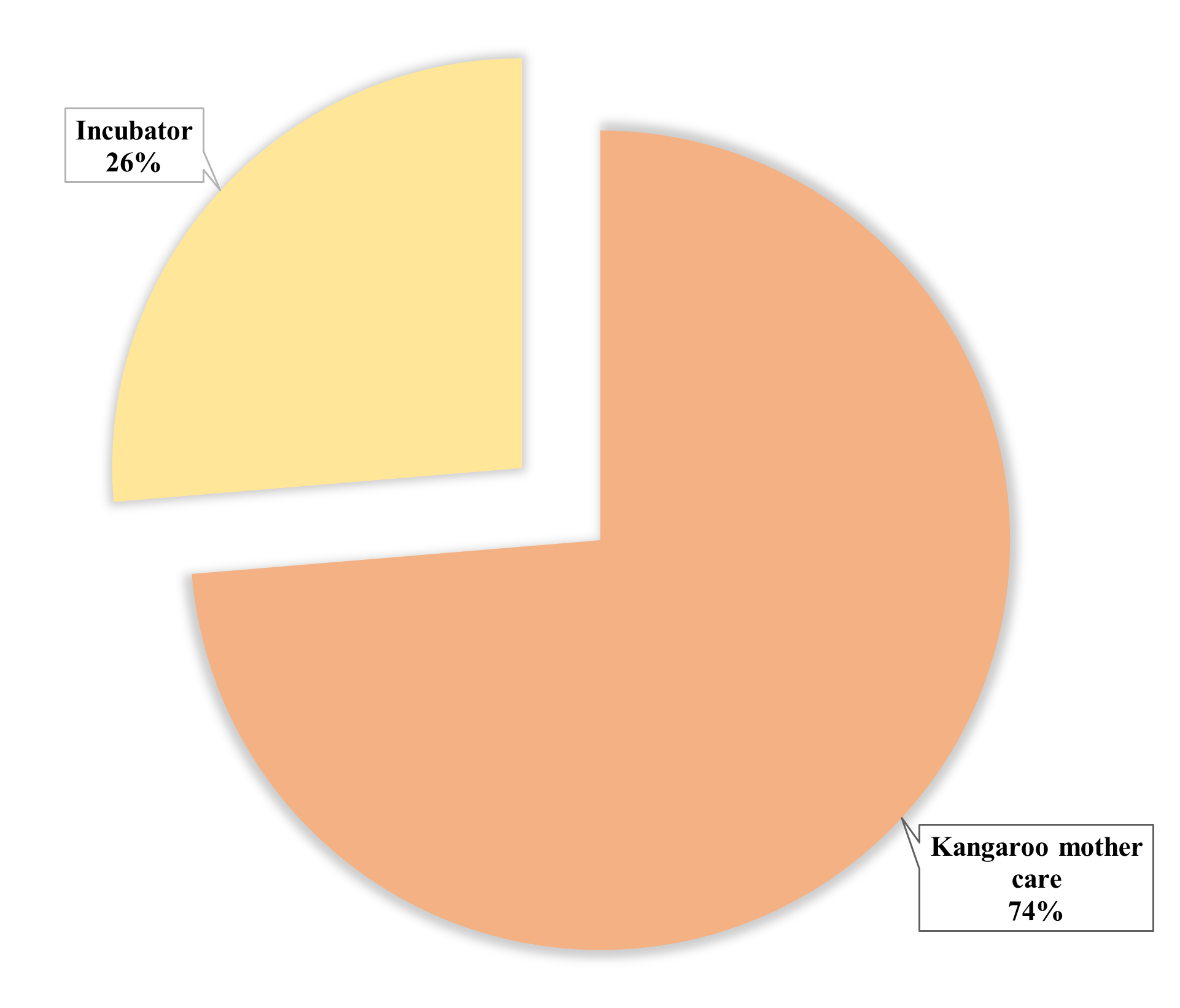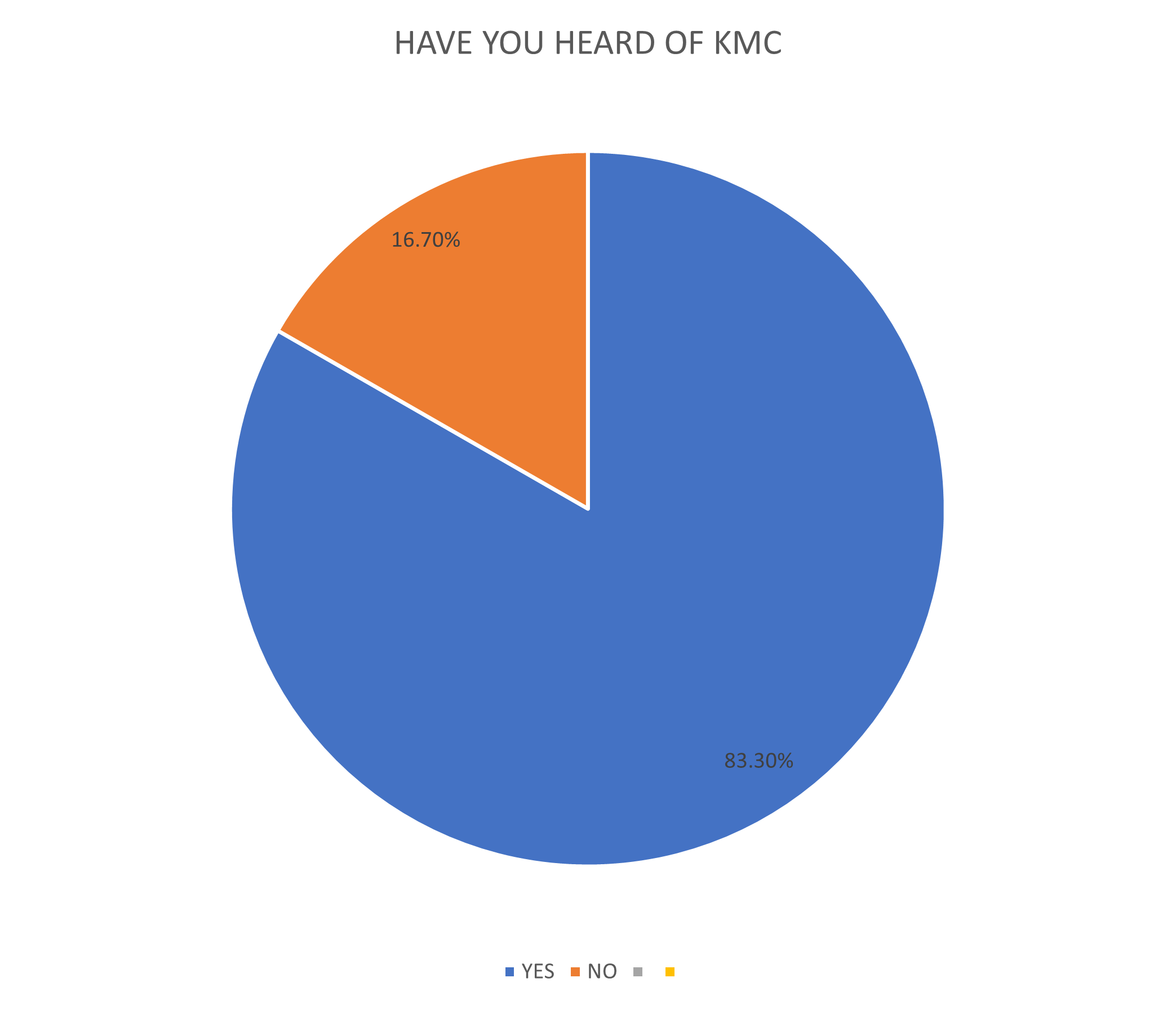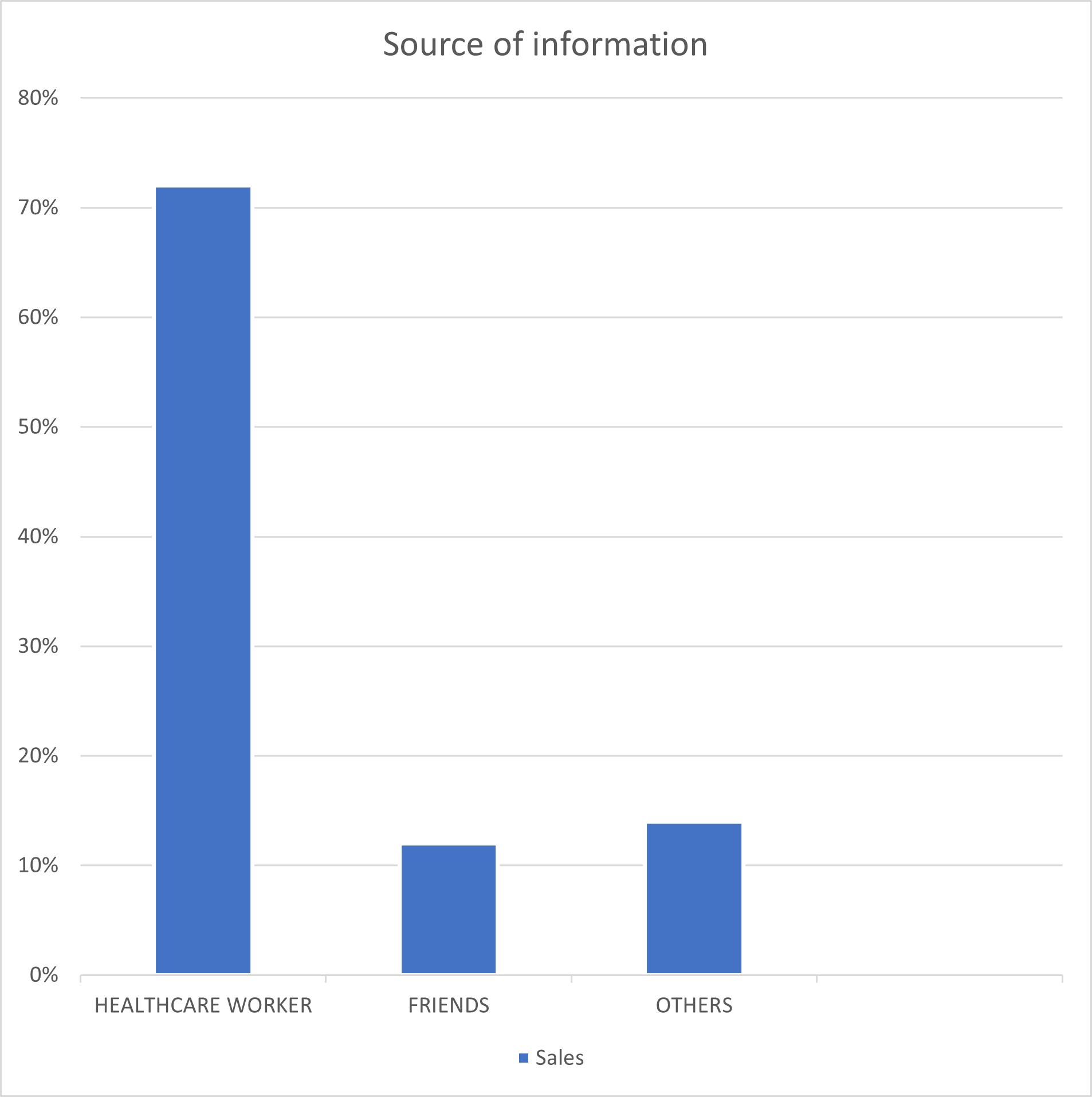Prevalence of Adoption of Kangaroo Mother Care among Postnatal Mothers in Nyeri County Referral Hospital, Kenya
- Mary Wanjiru WACHIRA
- Leah Wambui GATHOGO
- -250
- Jul 29, 2024
- Health
Prevalence of Adoption of Kangaroo Mother Care among Postnatal Mothers in Nyeri County Referral Hospital, Kenya
Mary Wanjiru WACHIRA*, Leah Wambui GATHOGO
Dedan Kimathi University of technology, School of Nursing, P.O. Box Private Bag, Nyeri – Kenya.
*Corresponding Author
DOI: https://doi.org/10.51244/IJRSI.2024.1107016
Received: 07 June 2024; Revised: 21 June 2024; Accepted: 26 June 2024; Published: 29 July 2024
ABSTRACT
Background: Kangaroo Mother Care (KMC) is a strategy for caring for preterm infants. The Ministry of Health in Kenya has recommended KMC practice for the care of stable preterm babies. However, the adoption and implementation KMC has been inconsistent across different counties in Kenya, including Nyeri County. This study’s main goal was to assess the prevalence of adoption of KMC in Nyeri county referral hospital, Kenya.
Methods: This study used a cross-sectional descriptive survey. Purposive sampling technique was used recruit 114 postnatal mothers with preterm infants admitted in the NBU. Questionnaires were used to collect data in July- August 2022. A pretest study was carried out in Karatina sub county hospital. The Statistical Package for Social Sciences Software Version 26 was used for data analysis. Results were presented in tables, narratives, and figures and frequencies like percentages were used. To determine the strength of the correlation, the chi-square test and logistic regression were applied.
Results: The prevalence of KMC in Nyeri County was high at 74%. Majority of those who practiced (83.3%) were familiar with it. The majority (83%) reported to have gotten the information from health workers through counselling. Counselling was significantly associated with KMC adoption (p = 0.001< 0.05).
Conclusion: The study recommended increased awareness through counselling on methods of infant care among mothers especially during their antenatal clinics.
Keywords: Prevalence, Adoption, Kangaroo Mother Care, postnatal mothers.
INTRODUCTION
KMC is a preterm infant standard of care that is both secure and affordable11. Its implementation varies across sub-Saharan African countries3. In Kenya, although there are more health institutions offering KMC services, the proportion of newborns initiated on KMC is still low5. Integrating KMC into national neonatal care policy might establish the framework for expanding KMC access and coverage11. Maternal factors promoting KMC uptake include; accepting KMC as the method of care for their infant, being willing to utilize KMC, and having access to family and professional support7.
In India a study was done to determine the acceptability and acceptance of KMC the majority of women in the community acknowledged that preterm newborns needed special attention6. Based on the study findings, this might be improved by holding regular talks with the mothers and other family members and teaching them about KMC. The researcher created an intervention program to start KMC at home using preliminary data, including household trials and came to the conclusion that high adoption rates of KMC occurred despite concerns about practicality.
In another study done in China, some factors that hindered KMC adoption were hospital related factors such as a staff shortage, work overload and limited space. The adoption of KMC, however, was facilitated by strong family support. To increase KMC acceptance in China, the researcher recommended new laws and policies that particularly addressed these inhibitors and enablers13.
In Ethiopia a study done to evaluate the acceptability, knowledge, attitude, and practice of Kangaroo mother care by postnatal mothers who gave birth to preterm and low birth weight babies in public hospitals there was low level of KMC adoption which was as a result of limited resources. For total acceptance of KMC more funding was advocated for9.
A study conducted at Kenyatta National Hospital aimed at determining the prevalence of KMC practice, the results indicated that it is still not widely used. Mothers only engaged in intermittent KMC for approximately 2.3 hours a day4. According to the study, the identified practice-related obstacles included a lack of staff, a lack of staff training, inadequate space and resources and limited time. In summary, the study discovered that while a lack of proper medical facilities hindered KMC’s practice, favorable perception and social support aided it. A study done in western region conducted research on the growth of Kangaroo Mother Care showed that greater access to and use of KMC1. According to the study, a purposeful interaction among social workers, community health volunteers, and health care professionals is required for KMC to succeed. He came to the conclusion that social aspects are quite important for the general acceptability and existence of the KMC.
Despite the large frequency of preterm births on average, 162 preterm births per year in Nyeri County there is no published study that looked into the prevalence of KMC. Additionally, information gathered in Nyeri County during the previous six years reveals a general rise in the number of premature deliveries. This study will generate information on prevalence of KMC amongst postnatal mothers in Nyeri County referral hospital. The findings will support the Government efforts towards achievement of SDGs 3.2 which seeks at reduction of neonatal deaths to below 12/1000, by the year 2030 through promotion of wellbeing for all at all ages through strategies like KMC. In Nyeri County, the study findings will enable the hospitals management identify gaps in implementing KMC, national policies and guidelines.
METHODOLOGY
This study was conducted in the postnatal wards of Nyeri County referral hospital in Nyeri County, Kenya. The facility offer basic and specialized care for newborn babies to include preterm infants thus making it suitable for this study. The study used a cross-sectional descriptive survey approach. The study population involved all postnatal mothers with preterm infants in Nyeri county referral hospital.
An average of data collected over six years for preterm deliveries in Nyeri County (n-162) was used to determine the total population. The sample size was calculated using the Fishers et al., (1998) formula as follows: N = Z2 x P (1-P)/d2 giving a total of 384 participants. However since the sample size was larger than the actual population, thus to adjust the population size based on the few numbers of preterm babies the researcher applied the Cochran’s formulae (1963) for a population of less than 10,000. nf=/ (1+-(n/N) resulting to 114 participants.
Purposive sampling was used to get the postnatal mothers with preterm babies who met the inclusion criteria admitted in Nyeri County referral hospital during the period of study.
Eligible mothers were approached and the study explained. If the mother is willing an informed consent was obtained. The researcher used self-administered questionnaires to collect data from the postnatal mothers. Both structured open and close ended questions were used. They were conducted in both Kiswahili and English depending on the respondents’ preference. Pretesting of the questionnaire was done at Karatina sub count hospital which involved administering of the questionnaire to a random 11 mothers, representing 10% of the total sample size. Data analysis was done using SPSS Software Version 26 to clean, code, and input the data at a significance level of p < 0.05. Results were presented as graphs, tables, frequency distributions, and percentages. At a 95% confidence level, the prevalence of KMC adoption was reported. In order to identify the independent variables associated with adoption, logistic regression was used. A P-value of below 0.05 was considered statistically significant.
RESULTS
The study findings on socio-demographic characteristics of the postnatal mothers showed that out of the 114 participants, majority were aged between 18-35 years n=94 (82.4%). The proportion of unemployed mothers was n=61 (53.5%), while the employed ones accounted for n=53 (46.5%). All the participants attended school with the majority having attained secondary education n=67(58.7%). From the findings n=87 (76%) of the participants attended antenatal clinics. Table 1.
Table 1: Socio-demographic characteristics of the postnatal mothers
| Characteristics | Frequency n=114 | Percentage | |
| Age
Young mothers (15 -35 yrs.). Elderly mothers (36 – 50 yrs.). |
94 20 |
82.4 % 17.6 % |
|
| Occupation
Employed Non employed |
53 61 |
46.5 % 53.5 % |
|
| Level of education
Primary Secondary Tertiary |
18 67 29 |
15.8 % 58.7 % 25.5 % |
|
| Did you attend ANC
Yes No |
87 27 |
76 % 23 % |
Prevalence of adoption of KMC among postnatal others.
The study sought to establish how many postnatal mothers with preterm babies practiced KMC. From Figure 1, it is observed that most of the respondents n=84 (74 %) showed that they were using the Kangaroo mother care as a method of infant care.
Figure 1: Method of Infant Care
Maternal factors influencing adoption
The study sought to establish the maternal knowledge on KMC among postnatal mothers. From the figure 2, shows that 83.3% (n=95) had some information on KMC.
Source of information on KMC
The study sought to find where the mothers got the information on KMC from. They reported to have received the information mostly from counselling done by healthcare providers 72% (n=67) as in table 2.
Table 2: Source of information on KMC
Time of counselling
The study sought to establish when counselling was done. Table 3 shows that majority 52% (n=40) received the information during admission to NBU.
Table 3: When counselling was done
Chi- square test was used to establish the relationship between counselling and KMC adoption. The results are presented in Table 3 shows that there was a statistically significant relationship between counselling and KMC adoption (p = 0.001< 0.05). This showed that the respondents who got counselling on baby care techniques were more likely to choose KMC as a method of infant care compared to those who did not get counselling.
Table 3: Chi-square results between counselling and KMC adoption.
| Did you receive counselling on KMC (n=84) | Statistics | |||
| Preferred method of infant care | Yes | No |
X2 = 10.886 df = 1 p = 0.001
|
|
| KMC | 64(76%) | 20 (24%) | ||
| INCUBATOR | 13 (43%) | 17 (57%) | ||
DISCUSSION
The study included 114 participants. Majority of the participants were young mothers n=94 (85%). They had all attended schools with majority having attained secondary education n=67(58.7%). From the findings n=87 (76%) of the participants attended antenatal clinics. The prevalence of adoption of KMC at Nyeri County Referral hospital was more than half n=84 (74%) owing to the multiple benefits KMC has been shown to have for both mothers and babies. This shows a higher prevalence of mothers using KMC in comparison to another study done in Kiambu, which recorded a 52% prevalence. Majority of the participants n=95 (83.3%) had some knowledge in regard to KMC. They reported to have received the information mostly from counselling by healthcare providers 72% (n=67). Majority 52% (n=40) received the information when counselling was done during admission to NBU. This was different from a study done in Ethiopia, which indicated that health education sessions during the follow-up of prenatal care were crucial for the full acceptance of KMC9.
Mother’s knowledge on KMC is a key element in KMC adoption2. From the findings, counselling was statistically significantly to adoption of KMC among postnatal mothers in Nyeri county referral hospital. This study had a higher prevalence than that of a study done in Lusaka, Zambia, which showed a 60% acceptance rate after receiving information and education about KMC from healthcare providers10.
CONCLUSION
The study concludes that KMC prevalence in Nyeri county referral hospital was high. Most of the mothers had adequate knowledge about KMC and they reported that the source of information was from healthcare workers through counselling which is mostly done after the delivery outcome.
The study recommends increased awareness through counselling on method of infant care among mothers especially during antenatal clinics. The study suggests a further study involving other facilities in the county as it will give a broader comparison and generalization of the study.
ACKNOWLEDGEMENT
The author wish to give thanks to the research participants, Nyeri County Health management team the Chuka University Ethics and Research Committee for review and approval for granting the approval to conduct the study.
CONFLICT OF INTEREST
The authors declare that they have no competing interests whatsoever
ETHICAL APPROVAL
Approval to undertake this study was sought from Chuka University and National commission for science, technology and Innovation (NACOSTI) through the Chuka University Ethics and Research Committee for review and approval (Ref. NO. 436299). The researcher also sought permission from the Nyeri County Health management team.
INFORMED CONSENT
The researcher clarified the purpose of the study to the participants before recruitment and obtain a verbal and written consent. They were allowed to withdraw from the study without any penalty and no follow up was required. Confidentiality and privacy of the respondents was maintained at all times.
REFERENCES
- Akun, T. (2018, June 12-14). Kangaroo Mother Care scale up in Western region in Kenya: Kibabii University 3rd interdisciplinary International Scientific Conference.
- Bilal, S. M., Tadele, H., Abebo, T. A., Tadesse, B. T., Muleta, M., W/Gebriel, F., Aziz, K. (2021). Barriers for kangaroo mother care (KMC) acceptance, and practices in southern Ethiopia: a model for scaling up uptake and adherence using qualitative study. BMC Pregnancy and Childbirth, 21(1), 25.
- Hailegebriel, T. (2018). Kangaroo Mother Care implementing Lessons. Maternal Newborn Health: UNICEF HQ; New York.
- Irimu G., Aluvaala J., Malla L., Omoke S., Ogero M., Mberi G., Waiyego M., Mwangi C., Were F., Gathara D., Agweyu A., Akech S., English M., (2021). Neonatal mortality in Kenyan hospitals: a multisite retrospective, cohort study. BMJ Global Health 6:5 doi:https://dx.doi.org/10.1136/bmjgh-2020-004475.
- Laura, T., Goldy, M., Tanya, G., Bina, V. & Steve, W. (2021). Monitoring the implementation and scale up of a lifesaving intervention for preterm and small babies: facility-based Kangaroo mother care. Save the Children, Washington, DC, USA.
- Mazumder, S., Upadhyay, R. & Bhandari, N. (2018). Kangaroo Mother Care: using formative research to design an acceptable community intervention. BMC Public Health: 18:307.
- Ministry of health (March, 2016). Kangaroo Mother Care. Clinical implementation guidelines. Nairobi Kenya.
- Mukhola, B. (2019) Kangaroo mother care practice during the Covid-19 pandemic among postnatal mothers of preterm in Kenyatta national hospital’s newborn unit. Nairobi, Kenya.
- Roba AA, Binoy S, Naganuri MA (2017) Knowledge, Attitude and Practice of Kangaroo Mother Care by Postnatal Mothers who Gave Birth to Preterm and Low Birth Weight Babies in Public Hospitals, Eastern Ethiopia. J Neonatal Biol 6: 264. doi: 10.4172/2167-0897.1000264
- Sibuchi G., N. C. (2018). Acceptance of Knagaroo Mother Care by mothers of premaature babies. African Journal of Midwifery and Women’s Health, Vol 12, NO. 4.
- Smith, E., Bergelson, I., Grace, J. & Constantian, S. (2017). Barriers and enablers of health system adoption of Kangaroo Mother Care: a systematic review of caregivers’ perspectives. BMC pediatrics: 17:35
- World Health Organization. (2018). Care of preterm and Low birth weight newborn. Retrieved from https://WHO.Int/maternal_child_adolescent/ newborn/ prematurity/en
- Yue, J., Liu, J., Williams, S. & Jennifer, B. (2020). Barriers and facilitators of kangaroo mother care adoption in five Chinese hospitals: a qualitative study. BMC Public Health: 20, 1234 (2020). https://doi.org/10.1186/s12889-020-09337-6





